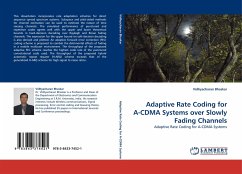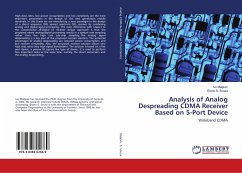This book focuses on the application of Successive Interference Cancellation (SIC) and Combining Macrodiversity (CM) in software defined radio (SDR) base stations to increase the reverse link capacity of wideband Code Division Multiple Access (CMDA) systems. First, in order to mitigate stringent resolution requirements on Analog-to-Digital Converters (ADCs) for SDR base stations, an adaptive prediction & cancellation digitization is discussed, which can significantly reduce the high dynamic range of the wideband analog signals and hence relax the steep ADC resolution requirements. Second, a SDR based distributed base station (DBS) architecture is introduced. With this architecture, a base station can simultaneously exploit the radio signals received by several DBSs to detect mobile users and hence the application of multi-cell ISC and CM becomes possible. Finally, based on a novel inter-cell interference model for mobile users with controlled power disparity, reverse link capacity improvements achieved by multi-cell ISC and CM are investigated in detail through theoretical analysis and computer simulations.








